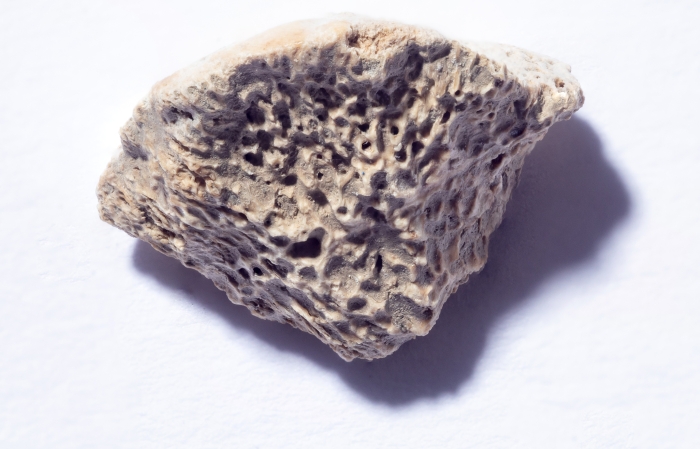A tiny, ancient bone fragment found in Southeast Alaska is a lot more than meets the eye. It belonged to a dog that lived in the region 10,150 years ago, which means it's a piece of the puzzle of dog migration into the Americas - and the humans that likely came along with it.
Scientists have sequenced the DNA found in the bone, positively identifying the animal. This makes it the oldest confirmed dog remains in the Americas, the researchers said.
"There have been multiple waves of dogs migrating into the Americas, but one question has been, when did the first dogs arrive? And did they follow an interior ice-free corridor between the massive ice sheets that covered the North American continent, or was their first migration along the coast?" said evolutionary biologist Charlotte Lindqvist of the University of Buffalo.
"We now have genetic evidence from an ancient dog found along the Alaskan coast. Because dogs are a proxy for human occupation, our data help provide not only a timing but also a location for the entry of dogs and people into the Americas. Our study supports the theory that this migration occurred just as coastal glaciers retreated during the last Ice Age."
 (Douglas Levere/University at Buffalo)
(Douglas Levere/University at Buffalo)
The fragment of bone, named PP-00128, was actually found quite some time ago, during excavations of Lawyer's Cave on the Alaskan coastal mainland in 1998 and 2003. Hundreds of bone samples and some human artefacts were collected in those excavations, and the fragment had been sitting in storage awaiting further examination.
Initially, scientists thought it was a fragment of bear bone - which would help put together a picture of the cave's usage throughout the millennia, but is not quite as relevant to human history.
It wasn't until Lindqvist and her team took a closer look at the mitochondrial DNA that they realised this supposition was - excitingly - very incorrect. The fragment, a piece of the rounded head of a femur about 1 centimetre (0.4 inches) across, belonged to a canine lineage that split from Siberian dogs around 16,700 years ago (Canis lupus familiaris).
This now almost completely extinct lineage, known as precontact dogs because they predate European contact in the Americas, went on to populate North America alongside indigenous humans. The branch of this precontact dog family tree that produced the owner of the PP-00128 bone sample split away around 14,500 years ago.
The DNA also revealed that the dog likely fed mainly on seafood, similar to dog remains found in Nunalleq, a precontact Yup'ik archaeological site in coastal Southwestern Alaska. In both cases, it's easy to imagine that the dogs fed on fish, seal and whale meat hunted and caught by their human companions.
Put all together, the evidence suggests that the region may be a significant one for the history of human migration into the Americas.
"This all started out with our interest in how Ice Age climatic changes impacted animals' survival and movements in this region," Lindqvist said.
"Southeast Alaska might have served as an ice-free stopping point of sorts, and now - with our dog - we think that early human migration through the region might be much more important than some previously suspected."
It only constitutes a piece of the puzzle. Humans entered the Americas several times over the millennia, bringing different dogs with them (because who would leave their puppy behind?). But it could be a very important piece.
"Our early dog from Southeast Alaska supports the hypothesis that the first dog and human migration occurred through the Northwest Pacific coastal route instead of the central continental corridor, which is thought to have become viable only about 13,000 years ago," said biologist Flavio Augusto da Silva Coelho of the University at Buffalo.
Precontact dogs were later almost entirely replaced by Inuit sled dogs and European breeds that arrived with the colonists, so studying remains such as PP-00128 could also help us understand the fate of the entire lineage.
The research has been published in Proceedings of the Royal Society B.
#Humans | https://sciencespies.com/humans/10000-year-old-dog-remains-from-alaska-hint-at-a-beautiful-tale-of-migrating-together/
No comments:
Post a Comment